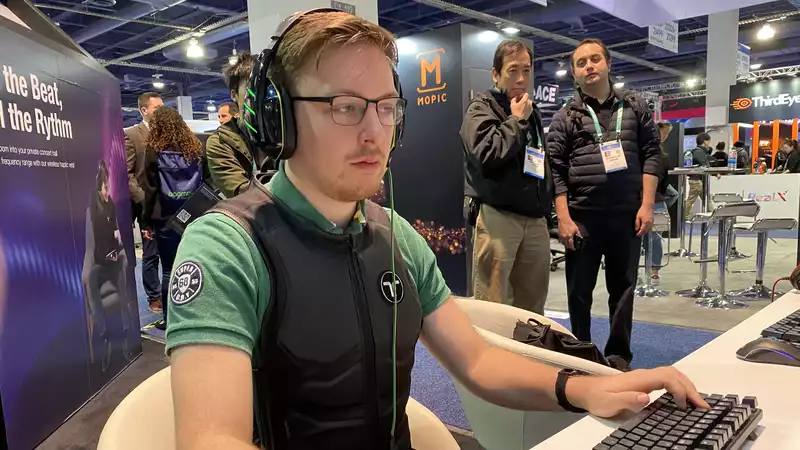Audiophiles often utter the cliché that when you are listening to something with good speakers or headphones, you can really "feel" the sound. But in the case of bHaptics' Tactot ($499), you can actually feel the sound.
The vest contains 40 haptic motors (20 in the front and 20 in the back), which are housed in a one-size-fits-all vest. These can be programmed to vibrate on specific triggers.
South Korean company bHaptics has been producing professional VR wearables since 2015, primarily for software developers and VR experience companies. However, the company showed off its first consumer product at CES 2020, and if you have the funds, you can add its ingenious haptic vest to your collection of gaming peripherals.
The Tactot connects to gaming laptops and gaming desktops via Bluetooth Low Energy (BLE), making it ultra-low latency and power efficient.
The first demo of Tactot played the VR action game Sairento. This is because it is one of a handful of games that bHaptic has partnered with for custom profiles available in the game. While playing, I didn't notice much about it. Not because the vibrations were weak or the vest was malfunctioning, but because it felt so close to natural. When I jumped, the lower actuators vibrated, the bullets fired by the enemy made the whole suit twitch, and my own shots were accentuated by the rhythmic shaking.
Tactot's latest feature is to read surround sound signals and convert them into vibrations. Cool, but still a work in progress. Once set up, any game (in the case of the second demo, Counter-Strike: Global Offensive), music, or movie can be used with Tactot to create a DIY 4D theater experience. It was much less sophisticated than what I experienced at Sairento. The entire array of actuators in the vest vibrated in unison rather than vibrating a specific actuator at a specific time, but it was still an immersive experience that showed that this technology has a lot of potential.
If you are not satisfied with how the Tactot works with your particular content, you can always adjust it yourself. bHaptics will also offer online sharing for users to collaborate and use others' custom profiles . While this may be a bit of a step for many users, it may be a goldmine for certain users to get the most out of their Tactot experience, much like modifying a PC game to add new features.
The Tactot is available on Amazon. $499 is a hefty price even for a VR peripheral, but bHaptic hopes the cost will come down in the future. The company also sells the entire TactSuit, which includes haptic accessories for arms, hands, feet, and head.
I wouldn't recommend this vest to fledgling VR gamers, but if you're already a big fan of VR and are willing to do some light coding to make your experience even better, the TactSuit is a new accessory on your wish list!
Now that's what I call a "new" VR experience.
Check out the CES 2020 Hub now for the latest news, hands-on impressions, and videos from the world's biggest tech show.










Comments